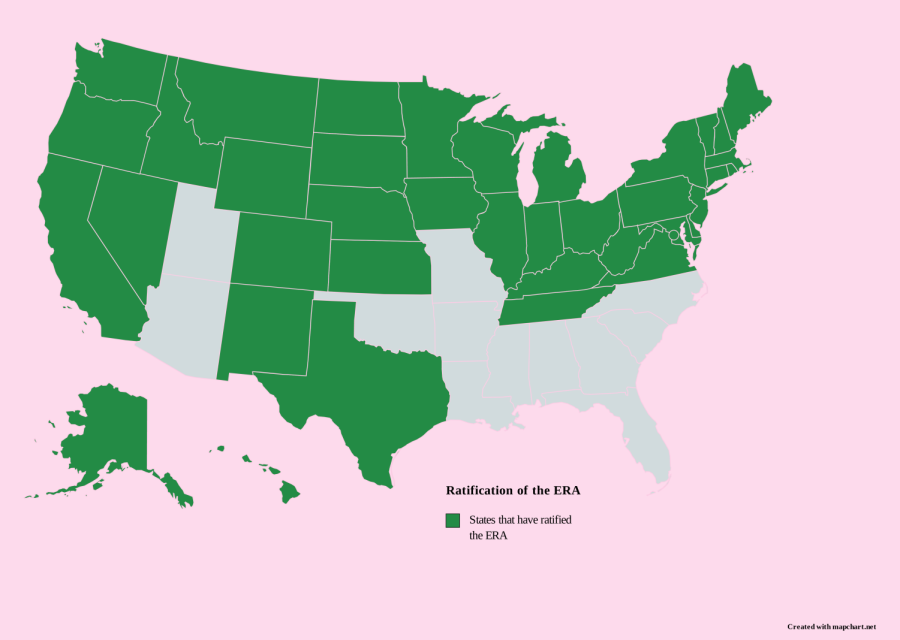America, it’s time to pass the Equal Rights Amendment
States that have ratified the ERA
There are 4,400 words that make up the American Constitution — yet there is not a single mention of women or laws that prevent discrimination based on gender. Some argue that the 19th Amendment makes up for the lack of inclusion. This, of course, was a good first step, but voting is undeniably a right that every citizen should have had since the founding of this country.
Additionally, there is no amendment that protects women from sex-based discrimination in the workplace or one that protects employees from sexual harassment. According to a study from Pew Research Center, roughly four in 10 women say they have experienced workplace discrimination based on their gender. Furthermore, 38% of women have experienced sexual harassment in the workplace. These conspicuously staggering statistics reflect America’s need for change — and that is exactly what the Equal Rights Amendment will do.
Alice Paul, a 20th-century women’s rights activist, authored the 1923 Equal Rights Amendment, a proposal that would guarantee protection from sexual discrimination against women. She believed that ensuring the concept of gender equality in America’s founding charter would reduce the constant inequality women face both in the workplace and at home. Between 1972 and 1982, supporters of the Equal Rights Amendment (ERA) lobbied, protested, and marched for constitutional equality.
In March of 1972, the ERA passed both chambers of Congress. 30 of the 38 necessary states acted to ratify it, but an opposing campaign emerged – titled “STOP ERA” – which quickly halted the ratification process. By 1977, only 35 states had ratified it. In recent years, with the resurgence of women’s activism including the #MeToo Movement and the 2017 Women’s March on Washington, there has been a renewed interest in ratifying the ERA. In 2017, Nevada became the first state to do so in 40 years, followed by Illinois a year later. In January 2020, Virginia became the 38th state, successfully reaching the requirement. So why isn’t the Equal Rights Amendment officially a part of the Constitution?
Congress originally granted the ERA a seven-year deadline but extended it by three more years in 1977. Unfortunately, it has been nearly 50 years since its proposal. Even with the extension, the amendment is long past its due date – but because Congress set the rules for the deadline, ERA supporters argue, they also possess the power to remove it.
The proposed Equal Rights Amendment has been in the works for nearly a century – the statistics of workplace discrimination and sexual harassment blatantly prove the need for its ratification now more than ever. Women have been fighting for equal representation in the workplace since the founding of the United States, and it is past time Congress granted them this allowance. Although the fight is still ongoing, there has never been a better time for the women of America to unite to fight for the ERA’s ratification.






Kaylee • Oct 20, 2022 at 12:18 am
Very beautifully and powerfully written abby!!
Emily Dudash • Oct 19, 2022 at 11:53 am
WOO go abby!!!! love this